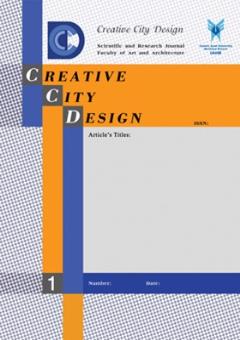Explanation of Effective Parameters in the Contemporary Revitalization of the Historical Fabric of the Samen District of Mashhad with an Emphasis on Preserving the Identity of the Site
Subject Areas : Creative City Design
Tina Farahbod
1
![]() ,
Mohsen Tabassi
2
,
Mohsen Tabassi
2
![]() ,
Sanaz Saeidi Mofrad
3
,
Vahid Ahmadi
4
,
Sanaz Saeidi Mofrad
3
,
Vahid Ahmadi
4
1 - Ph.D. Candidate, Department of Architecture, Mashhad branch, Islamic Azad University, Mashhad, Iran.
2 - Associated professor, department of architecture, Mashhad branch, Islamic Azad University, Mashhad, Iran.
3 - Associated professor, department of urbanism, Mashhad branch, Islamic Azad University, Mashhad, Iran.
4 - Assistant professor, department of architecture, Mashhad branch, Islamic Azad University, Mashhad, Iran.
Keywords: Contemporization, Historical-Cultural Urban Context, Identity, Mashhad Metropolis,
Abstract :
The historic urban context of Mashhad, which symbolizes the identity and heritage of several thousand years, has been seriously damaged in the modern era. On one hand, this damage is due to the emergence of new needs and functions, and on the other hand, it is due to the emerging need for changes in the identity and function of its historical spaces. This research examines the role of physical, economic, and socio-cultural factors and parameters in contemporizing the historic urban context of the Mashhad metropolis, emphasizing the importance of identity preservation. The research method used in the current study is descriptive-analytical. For each of the physical, economic, and socio-cultural parameters of contemporization, indicators were considered based on the answers of experts using the Delphi technique. The data obtained from the questionnaire were processed using statistical software. Among the parameters, physical parameters received the highest score, while socio-cultural parameters received the lowest score in contemporizing the historic urban context of the Samen district of Mashhad. In the next step, the indicators of each parameter were ranked and categorized using the AHP method. The results indicate that the improvement of access to the context is the most crucial advantage of contemporizing the historical urban context. Conversely, the loss of context is the most significant disadvantage. Providing service infrastructure for livability is the most significant opportunity, and finally, the effects of prolonging the construction process are considered the most critical threats.


